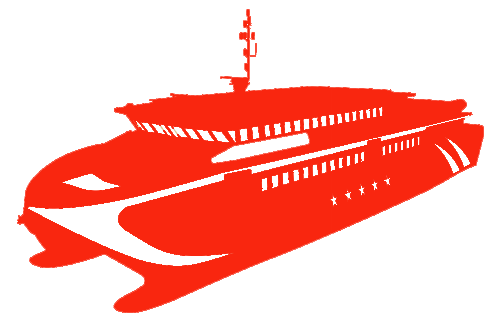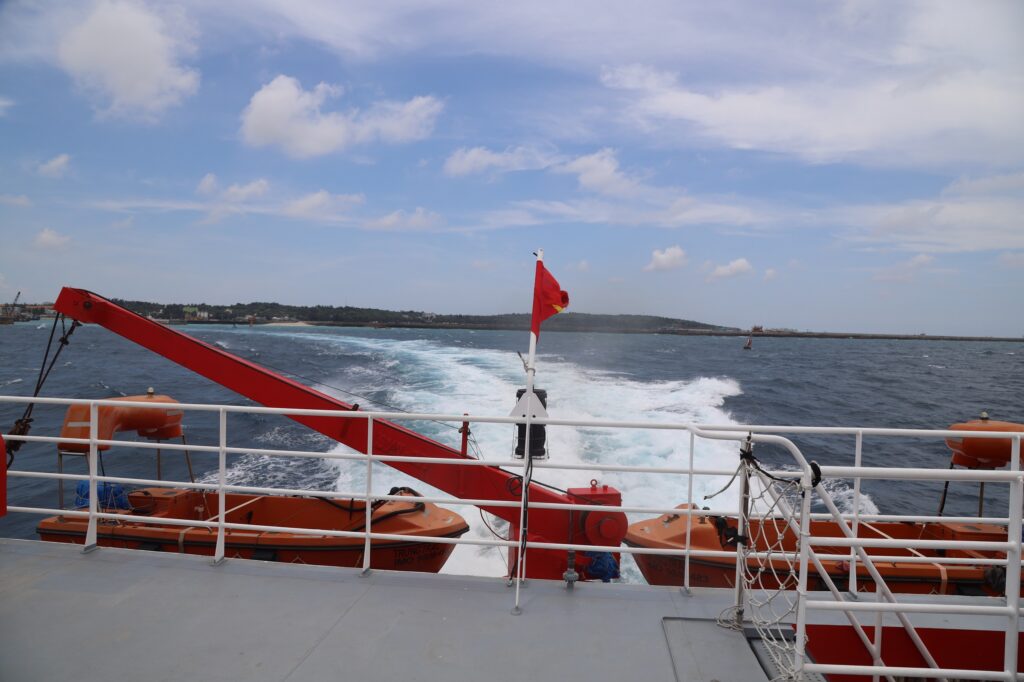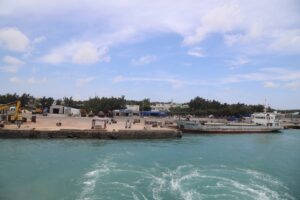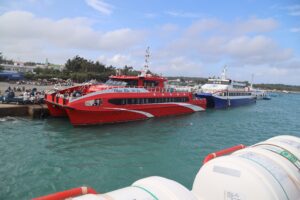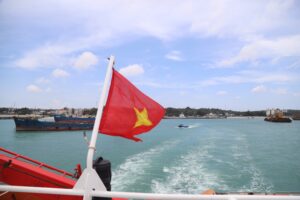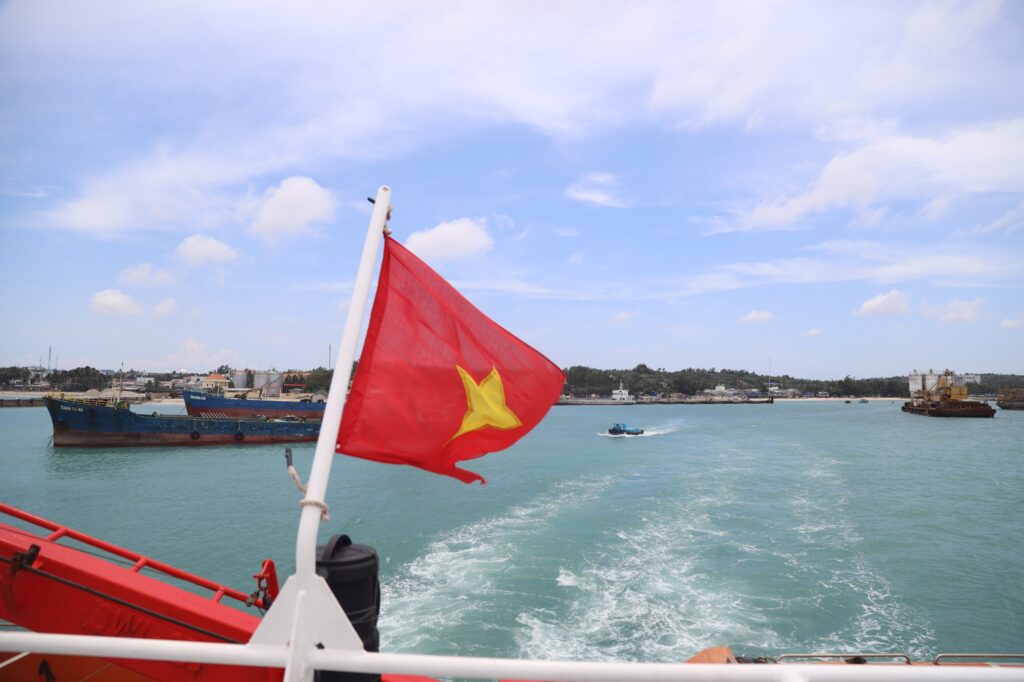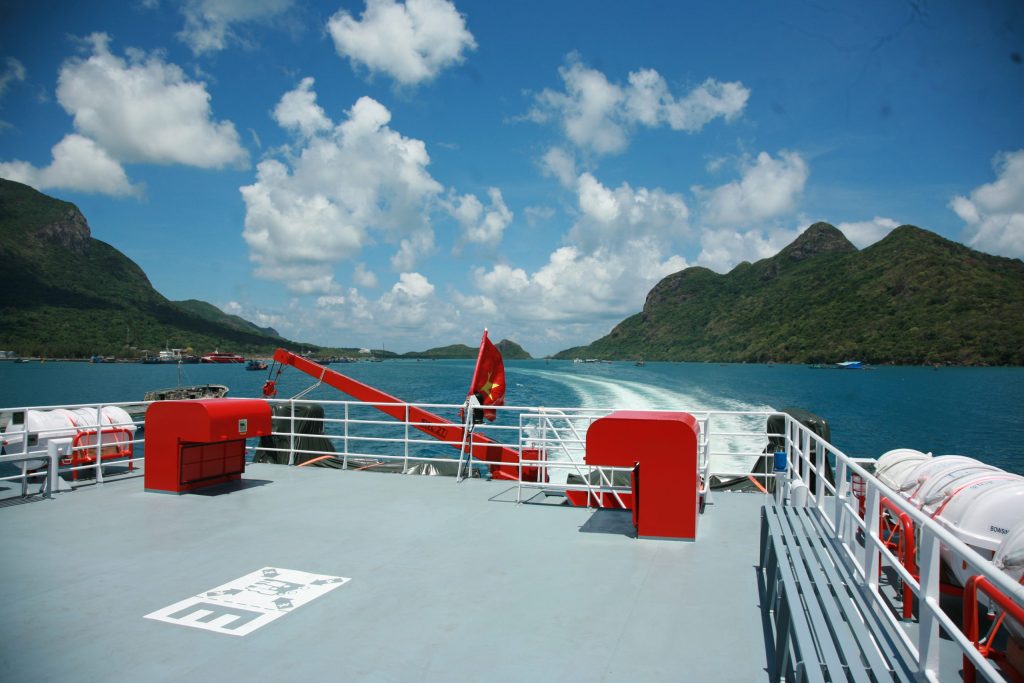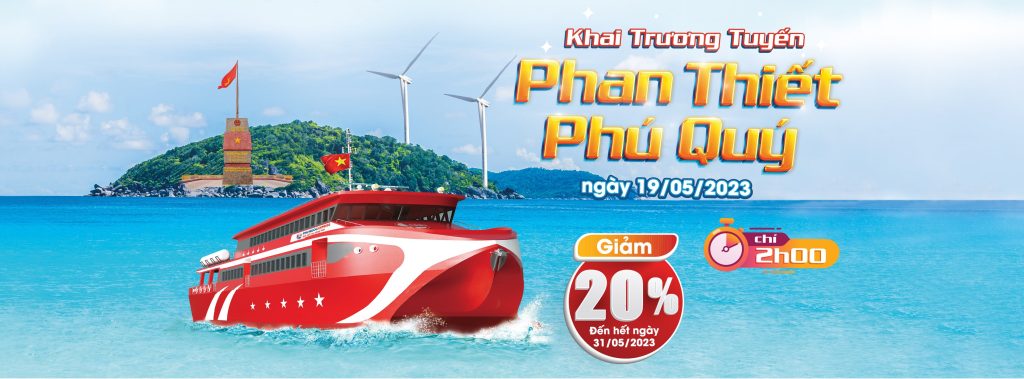At the beginning of the Nguyen Dynasty, Phu Quy Island was known as Vu Island or Hon Khoai; it was later renamed Thuan Tinh, under Tuy Phong District, Ninh Thuan Prefecture, Binh Thuan Province. Although “located far out at sea,” the island had long been home to residents who had formed 11 hamlets and paid an annual tax in white cloth (plain cotton) to the royal court. Historical records describe the island as having “poor soil and impoverished people who mainly grew red rice and upland sweet potatoes to survive.” Recognizing this hardship, Emperor Gia Long (1802–1820), after stabilizing the administration, ordered a review and determined that the cloth tax was too burdensome for the residents of Vu Island, and thus “issued a decree for a tax reduction” (1).
Not only were taxes reduced, but Emperor Minh Mang (1820–1841) also exempted young men from the island from being conscripted into the military. He reasoned that “they live precariously far out at sea, and if drafted into the provincial army, the long and difficult sea journey would cause great inconvenience. Therefore, out of grace, they were removed from the military register and returned to the civilian rolls, continuing only to pay the cloth tax as before” (2).
The coastal and island areas from Binh Thuan to Ha Tien bordered the maritime zones of Southeast Asian countries and were frequently attacked by pirates, especially those known as Java (Chà Và) and Doba (Đồ Bà). These pirates were particularly active during the southwest monsoon season (from May onward). Phu Quy Island specifically faced disturbances from Doba pirates and Chinese pirates known as “Tàu Ô.”
A report dated January 29, 1833 (14th year of Minh Mang, Year of the Water Snake) from the village chief of the 11 hamlets (Thoi An, My Xuyen, An Hoa, Phu Ninh, Huong Lang, Thuong Hai, Hai Chau, Thoai Hai, My Khe, Trieu Duong, and Hoi Thuyen) listed all the firearms and ammunition available on the island. These weapons had been supplied by ships from Gia Dinh to help the people of Thuan Tinh defend against a previous landing and looting by a group of Chinese pirates (3).
Also in 1833 (August, Year of the Water Snake), the people of Phu Quy once again faced a raid by Doba pirates. The Dai Nam Thuc Luc (Veritable Records of Dai Nam) recorded: “Over 20 pirate ships from the Doba group clandestinely appeared at Thuan Tinh Island, Binh Thuan Province. The local people fought against them, resulting in more than 100 casualties. The province dispatched Deputy Commander Pham Van Huyen and Sub-Lieutenant Duong Van Khoa with naval troops to pursue and confront the pirates at Mao Du Island, where they captured one pirate ship, seized three pirates, and killed many others. When the emperor heard of this, he rewarded Pham Van Huyen and his men with five large silver dragon coins each; the soldiers and civilians received a total of 300 coins. Those injured or killed were granted compensation according to rank” (4).
Citing a report dated September 10, 1833, by the village chief of Thoi An, researcher Nguyen Xuan Ly stated that on the 9th day of the 7th lunar month, 32 Doba pirate ships suddenly landed on Thuan Tinh Island and killed 32 civilians, including four from Thoi An village (5).
The pirate raids on Phu Quy Island were not only documented in official histories and administrative records but were also preserved in local oral traditions, reflecting the islanders’ spirit of resistance and determination to defend their homeland. During fieldwork in Long Hai Commune, Mr. Tran Thanh Phong shared a script titled The Echoing War Drum, a cải lương (reformed theater) play based on stories passed down by elders. The story goes:
During the time of a local leader named Kieu Huy Mang (?), the Doba pirates invaded the island, forcing villagers to flee. Kieu Huy Tang, the leader’s son, took his daughter Kieu Mi on a small boat to escape, leaving behind his pregnant wife Doan Thi Cam Duong. Before leaving, he broke a hairpin in half, giving one part to his wife as a token. Cam Duong later gave birth to a son, Kieu Huy Van. When Van was five years old, his mother passed away, and he was raised by his maternal grandfather, Doan Chau. When Van turned nine, his grandfather also died. On his deathbed, Chau entrusted the other half of the hairpin to Van and told him to find his father and sister.
After rebuilding his forces, Kieu Huy Tang returned and successfully expelled the Doba pirates from the island. Military drills and defensive structures were then established, with Go Tang being a notable example. Later, the island was again attacked by Chinese pirates led by Admirals Hai Huong and Nu Xam. In Tang’s ranks was a man named Pham Dot, who, lured by promises of power, betrayed Tang and sided with the enemy, causing a significant defeat. However, thanks to the help of Lady Ban Tranh (?) and Commander Van Giang (?), many enemy ships were sunk or burned, Nu Xam fled, and Hai Huong was captured by the locals. Tang’s forces thus achieved a great victory, and the father and son were finally reunited thanks to the matching halves of the hairpin.
Protecting coastal and island populations held a vital place in the policies of the Nguyen emperors and was frequently mentioned in the Dai Nam Thuc Luc. According to Emperor Minh Mang, the islands had long been inhabited, but prior to 1834, the state had not provided boats or weapons for defense against piracy. The emperor therefore “ordered the governors, provincial commissioners, and magistrates of coastal provinces to identify islands with inhabitants under their jurisdiction and arrange for the refurbishment of fast fishing boats—three boats for larger communities, two for smaller ones—each capable of carrying several dozen people. The government would cover all costs. Spears, flintlock guns, and ammunition were to be issued so the locals could patrol. If pirates appeared, they were to engage the enemy and simultaneously send boats to report the incident to avoid delays” (6).
Emperor Minh Mang emphasized that these measures were only temporary. For long-term peace, “a proper and systematic arrangement” was necessary. Accordingly, “officials were authorized to thoroughly evaluate and propose whether to build fortresses, station troops, or recruit local militia to defend the population. Once a well-considered plan was made, it should be submitted for approval before implementation” (7).
A 19th-century administrative document preserved in Phu Quy shows that the island was divided into five military units, with Thoi An and Hai Chau each forming one unit. The weapons were distributed as follows: Thoi An had one cannon, four flintlock rifles, twenty fire-spewing tubes, five long spears, and five pounds of gunpowder. Hai Chau received a similar allotment, except for one yen and two pounds of gunpowder (1 yen = 10 pounds = 6.045 kg) (8).
Foreign merchant ships arriving at the island were met with high vigilance. For instance, in the Year of the Tiger (1842), two Western ships approached the island. Despite repeated attempts to drive them off, the ships refused to leave. When this was reported to Emperor Thieu Tri, he replied: “If the Western ships came merely to obtain firewood and water, with no other intent, then let them come ashore to gather what they need. But they must not be allowed to enter villagers’ homes at will, nor should they be driven away too aggressively, lest they think we are inhospitable” (9).
Conclusion
In the 19th century, the coastal and island regions of Binh Thuan frequently faced attacks from Chinese, Doba, and Java pirates. Thanks to the resilience of the local people and the strategic policies of the Nguyen Dynasty, the region was successfully defended, ensuring peace and safety for its residents. This series of accounts highlights notable incidents of piracy and the corresponding government responses—valuable lessons for today’s efforts to protect maritime sovereignty.


